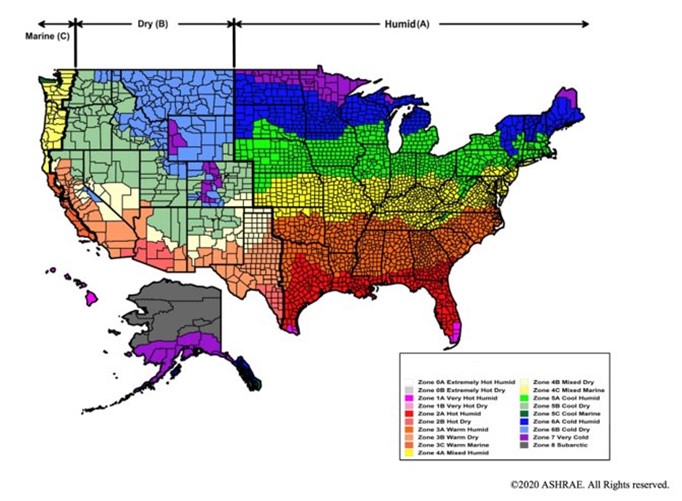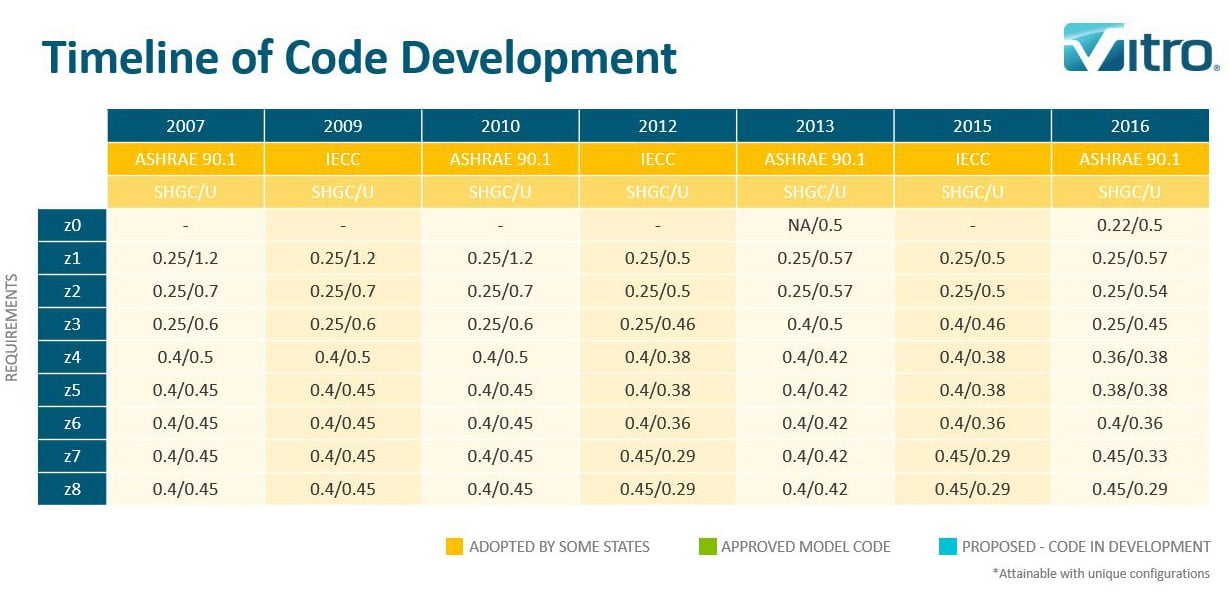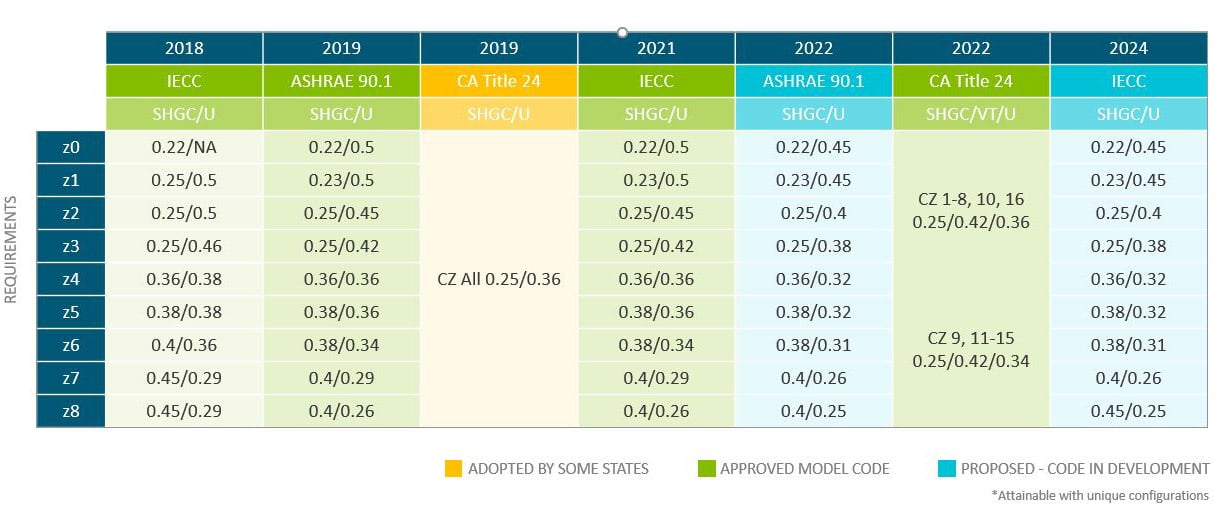Green Building Codes
In the United States, green building strategies that can help reduce energy consumption are increasingly being introduced to traditional building codes. As a result, architects need to be mindful of the environmental impact of their designs.
For glass fabricators and window manufacturers, it is important to understand the two major building codes established in the U.S. that impact the glass industry: the International Energy Conservation Code® (IECC) and the American Society of Heating, Refrigeration & Air Conditioning code (ASHRAE). These codes are updated and adopted every three years to ensure design teams are employing energy efficient products in their projects.
Leading Code Organizations
The International Energy Conservation Code® (IECC) addresses energy efficiency on several fronts including cost, energy usage, use of natural resources and the impact of energy usage on the environment. It was most recently updated in 2021.
The American Society of Heating, Refrigeration & Air Conditioning (ASHRAE) is a member organization that advances the art and science of heating, ventilation, air conditioning, refrigeration and their allied fields with the vision of a healthy and sustainable built environment for all. In addition to its code, ASHRAE issues standardized maps of climate zones in North America and worldwide that help inform the necessary energy efficiency performance for various regions.
ASHRAE Map 2021

This climate zone map is provided by ASHRAE. Last update issued in 2021.
Code Adoption
States choose which version of each of these codes to adopt as the minimum requirements for construction in that state. Many projects choose to follow IECC, but frequently, projects pursuing specific green building certifications such as LEED® will choose to follow ASHRAE instead. Below is a timeline that combines code versions currently adopted by some states with approved model codes and codes in development from both IECC and ASHRAE:



US DOE BECP: Status of State Energy Code Adoption
State of Energy Index Data
Updated as of 06/08/24
For the most up-to-date information on codes, consult with the U.S. Department of Energy (DOE) or your local code authority. For specific information about window performance, consult with a window or curtainwall manufacturer or other qualified design professional.
Updated on August 15, 2024




